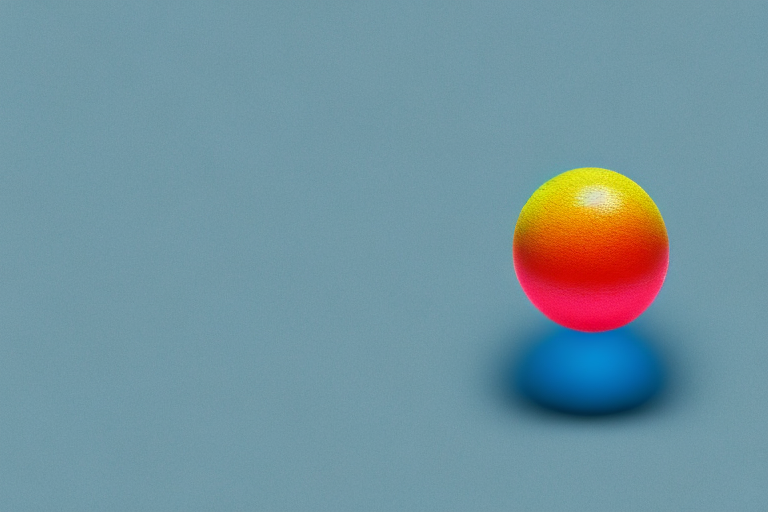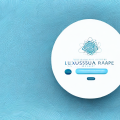Trigger points are small, painful nodules that can develop in muscles all throughout the body, caused by overuse, tension or injury. They can cause discomfort, stiffness and even referred pain. Fortunately, there are a variety of methods to release trigger points, one of which is using a trigger point ball.
What are Trigger Points and How Do They Form?
Trigger points typically form in muscles that are overused, or experience tension or injury. They can also develop due to chronic postural imbalances, which put excess stress on certain muscles over time. This leads to the formation of small, localized areas of ischemia, or lack of oxygen and nutrients, in the muscle tissue. These areas become hyper-excitable, contracting and tightening even when they aren’t needed. The buildup of waste products in these areas can also cause pain and discomfort.
Trigger points can cause a variety of symptoms, including referred pain, muscle weakness, and limited range of motion. They can also contribute to the development of chronic pain conditions, such as fibromyalgia. Treatment for trigger points typically involves manual therapy, such as trigger point release or massage, as well as stretching and strengthening exercises to address any underlying postural imbalances. In some cases, medications or injections may also be used to manage pain and inflammation.
Understanding the Benefits of Trigger Point Release
Trigger point release is a valuable tool in alleviating the stiffness, pain and dysfunction associated with trigger points. By applying pressure to the area, you can help increase circulation, oxygen and nutrient delivery to the area. This can help break up adhesions and restore normal tissue elasticity. This also helps relieve associated symptoms, such as reduced range of motion, stiffness, and pain.
In addition to the physical benefits, trigger point release can also have a positive impact on mental health. Chronic pain and discomfort can lead to anxiety, depression, and other mental health issues. By relieving pain and improving physical function, trigger point release can help improve overall well-being and quality of life. It can also promote relaxation and reduce stress levels, which can have a positive impact on mental health.
How a Trigger Point Ball Works to Release Tension
A trigger point ball is a small, firm ball designed to be used to apply pressure to specific areas of the body. By using the ball to apply pressure to tense, achy, or stiff tissues, you can help relax them and mitigate any pain or discomfort. The ball works by applying direct pressure to the affected area, breaking up any constrictions or tightness in the tissue. This is particularly effective for trigger points, where sustained pressure is needed to release the knots.
Using a trigger point ball can also help improve circulation in the affected area. As you apply pressure to the tissue, you stimulate blood flow, which can help reduce inflammation and promote healing. Additionally, using a trigger point ball can help improve your range of motion and flexibility by releasing tension in the muscles and joints. It’s important to use the ball correctly and to start with gentle pressure, gradually increasing as your body becomes accustomed to the sensation. With regular use, a trigger point ball can be a valuable tool in managing pain and tension in the body.
Different Types of Trigger Point Balls and How to Choose the Right One for You
There are a variety of different kinds of trigger point balls available, each with their own unique characteristics. Some are more firm, while others are softer to the touch. Some balls may contain additional material or textures for an improved sensory experience. To find the ideal trigger point ball for your needs, consider your unique situation, preferences, and sensitivities. Experiment with different balls to see which one feels best for you.
When choosing a trigger point ball, it’s important to consider the size and shape of the ball as well. Some balls are smaller and more compact, making them ideal for targeting specific areas of the body, such as the feet or hands. Other balls may be larger and more versatile, allowing for use on larger muscle groups like the back or legs. Additionally, some trigger point balls may have a unique shape, such as a peanut or double ball design, which can provide a more targeted and effective massage. Take into account the areas of your body that you want to target and choose a ball that is the appropriate size and shape for your needs.
Techniques for Using a Trigger Point Ball on Different Parts of Your Body
The techniques used to release trigger points with a trigger point ball can vary based on the part of the body you are working on. Some techniques involve simply placing the ball in a particular spot and holding it there, while others require movement, distortion, or dynamic release. To get the greatest impact from your trigger point ball, research some basic techniques before you begin your self-care routine.
For example, when using a trigger point ball on your back, you can place the ball between your spine and shoulder blade and roll it up and down to release tension in the muscles. When using the ball on your feet, you can roll it under your arches to relieve plantar fasciitis pain. It’s important to start slowly and gently, gradually increasing pressure as your muscles become more relaxed. Remember to breathe deeply and relax your body as you work on each trigger point.
Combining Trigger Point Release with Other Forms of Self-Care
Trigger point release via a trigger point ball can be reinforced with other forms of self-care, such as stretching, mobility work, rest, and hydration. Using these complementary measures together can improve the efficacy of your self-treatment, and enhance your overall wellness.
Stretching can help to lengthen and loosen tight muscles, which can reduce the likelihood of trigger points forming. Incorporating mobility work, such as foam rolling or yoga, can also help to improve flexibility and reduce muscle tension. Rest is also an important aspect of self-care, as it allows your body to recover and repair. Finally, staying hydrated can help to flush out toxins and keep your muscles and fascia healthy. By combining trigger point release with these other forms of self-care, you can create a comprehensive self-treatment plan that supports your overall health and well-being.
Common Mistakes to Avoid When Using a Trigger Point Ball
While using a trigger point ball is a relatively safe and straightforward process, there are still some basic guidelines to follow in order to get optimal results. These may include applying the right amount of pressure, using proper form, being aware of underlying health conditions, and knowing when to seek medical advice.
How Frequently Should You Use a Trigger Point Ball?
The frequency with which you use a trigger point ball to release tension will depend on several factors, such as the severity of your condition and your individual recovery rate. Generally, it is safe to use a trigger point ball once per day, with a focus on key areas with trigger points identified by your physician or physical therapist.
Exploring Alternative Tools for Trigger Point Release
In addition to trigger point balls, other tools may be used to release tension and treat trigger points. Examples might include foam rollers, massage therapy, acupuncture, and heat therapy. If you find that a trigger point ball is not effective for your needs, speak with a healthcare professional to help develop a personalized plan for addressing your trigger points.
By using a trigger point ball, you can start the process of gradually releasing tension and eliminating trigger points in your body. With proper use and additional self-care measures, you’ll soon have less pain, improved flexibility and greater overall well-being.





